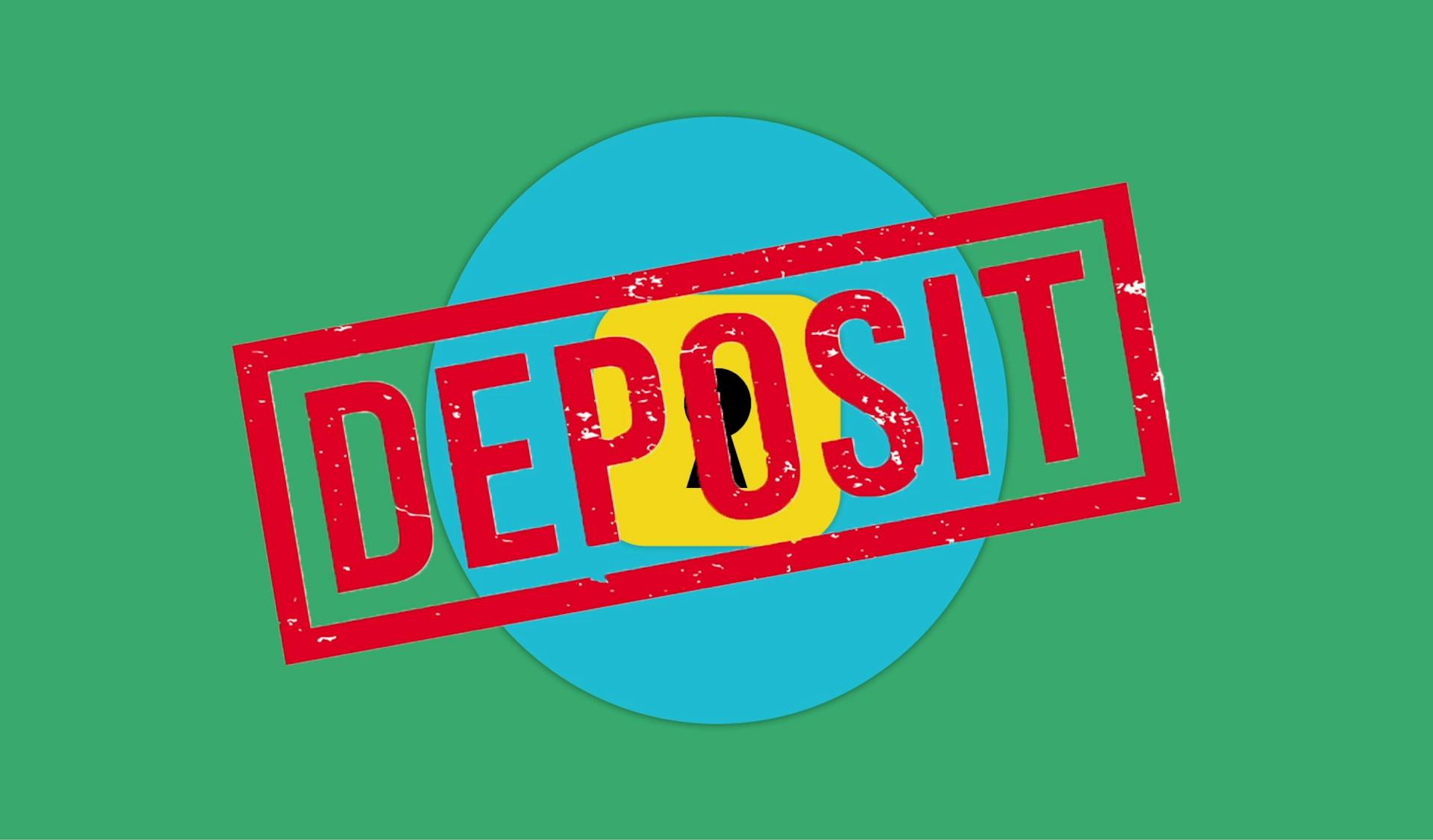
Underwriting in the insurance industry is a complex process that determines the risk level of potential policyholders.
The primary goal of underwriting is to assess the likelihood of an individual or business making a claim, which affects the premium they pay.
Insurance companies use various methods to evaluate risk, including medical exams, credit checks, and lifestyle questionnaires.
These assessments help underwriters determine the level of coverage and premium for each policyholder.
Underwriters must consider factors such as age, health, and occupation when evaluating risk.
A person's age can significantly impact their premium, with younger individuals typically paying lower premiums than older individuals.
Insurance companies often use actuarial tables to determine life insurance premiums based on age and other factors.
Recommended read: How Do Insurance Companies Reduce the Risk of Moral Hazard
What is Underwriting?
Underwriting is a process used to determine the risks and prices of various financial products and services. It's a crucial step in making informed investment decisions.
In the context of municipal bonds, underwriting involves purchasing newly issued securities from the issuer and selling them to investors. This process is typically handled by municipal securities dealers, also known as underwriters.
For another approach, see: Which of the following Describes the Securities Underwriting Process

The underwriting process for municipal bonds is a coordinated effort among various professionals, including municipal advisors, bond counsel, underwriters, and rating agencies. This team works together to finalize the financing plan, develop offering documents, and market the bond offering to investors.
The initial offering price of a municipal bond is set at a price that reflects its yield, which is the annual rate of return on an investment. This yield is influenced by factors such as the bond's credit quality, terms, and features, as well as the general interest rate environment and credit market conditions.
The underwriting spread, which represents expenses and compensation to the underwriter, can range from 0 to 1% of the bond's face value. For example, if an issuer issues $10,000,000 in bonds at par value, the underwriter might receive $9,900,000 after deducting the underwriting spread.
In the context of insurance, underwriting is the process used to determine the risks of insuring a small business. This involves the insurance company assessing the business's risk level and calculating an appropriate premium for coverage.
If this caught your attention, see: State of Israel Bond
Types of Underwriting

Underwriting involves various types of assessments to determine risk and set premiums.
Life underwriting is a type of underwriting that focuses on assessing the risk of an individual's life, typically for life insurance policies.
Property underwriting, on the other hand, involves evaluating the risk of damage or loss to a property, such as a home or building.
Health underwriting assesses the risk of an individual's health, often for health insurance policies or life insurance policies with a health component.
Creditor underwriting is a type of underwriting used by lenders to assess the risk of lending money to an individual or business.
Commercial underwriting involves evaluating the risk of a business or organization, often for commercial insurance policies.
A fresh viewpoint: How Often Does an Underwriter Deny a Loan
Insurance Industry
In the insurance industry, underwriting is a crucial process that involves evaluating the risk of insuring a person or asset. This is done by assessing various factors such as age, health, and occupational risks.
Underwriters in the insurance industry set the premiums and terms of the insurance policy based on their evaluation. For example, someone with a history of health issues may be charged a higher premium for health insurance.
Insurance underwriting also involves evaluating driving records for auto insurance. This is because a person's driving history can indicate their likelihood of being involved in an accident.
You might enjoy: Health Insurance Asking about Accident or Injury
Insurance

Underwriting is a crucial process in the insurance industry, where insurers evaluate the risks of insuring a small business and determine the terms of the coverage.
Insurance underwriting involves assessing various factors such as age, health, and occupational risks for life or health insurance, and driving records for auto insurance. Based on the evaluation, the underwriter sets the premiums and terms of the insurance policy.
Underwriting applies to all forms of small business insurance, including general liability insurance, professional liability insurance, and commercial property insurance. Insurance underwriting is also central to all forms of insurance, including life insurance, health insurance, and commercial insurance.
Insurance companies use underwriting to determine the risks of insuring a business, and it's a critical step in the insurance process. By understanding the nature and scope of the financial risk, insurers can provide financial assistance to businesses in the event of a loss.
Here are some examples of insurance underwriting:
- General liability insurance
- Professional liability insurance
- Business owner’s policy (BOP)
- Errors and omissions insurance
- Commercial property insurance
- Cyber insurance
- Commercial umbrella insurance
- Excess liability insurance
- Workers’ compensation insurance
- Commercial auto insurance
Bank

In the insurance industry, banks play a crucial role in the underwriting process, which is a critical aspect of financial transactions. Banks are responsible for evaluating the creditworthiness of borrowers and determining the terms of loans.
Bank underwriting involves a detailed credit analysis, which includes verifying employment history, salary, and financial statements, as well as publicly available information such as credit history. This process helps lenders assess the borrower's credit needs and ability to pay.
The underwriting process in banking can be divided into two main areas: consumer loan underwriting and commercial underwriting. Consumer loan underwriting includes mortgage underwriting, which involves evaluating the borrower's credit history, income, and employment status.
In commercial underwriting, lenders evaluate the financial information provided by small businesses, including their balance sheet and income statement. This analysis helps lenders determine the business's creditworthiness and ability to repay loans.
Bank underwriting can also refer to the purchase of corporate bonds, commercial paper, and government securities by commercial banks or dealer banks. This process involves evaluating the creditworthiness of the issuer and determining the risk associated with the investment.
Take a look at this: What Do Mortgage Brokers Look for on Bank Statements

Here's a summary of the key aspects of bank underwriting:
- Consumer loan underwriting: Verifying employment history, salary, and financial statements, as well as credit history.
- Commercial underwriting: Evaluating financial information provided by small businesses, including balance sheet and income statement.
- Purchase of corporate bonds, commercial paper, and government securities: Evaluating creditworthiness of the issuer and determining risk.
Insurance Agent and Broker
As an insurance industry professional, you'll often come across the terms "agent" and "broker." In reality, they're not interchangeable, with agents typically representing a single insurance company, while brokers work with multiple companies to find the best fit for clients.
Insurance agents are usually employed by a single insurance company and are responsible for selling that company's policies. They often have a deep understanding of their company's products and can provide expert advice to clients.
Brokers, on the other hand, work independently and represent multiple insurance companies. This allows them to shop around for the best policies and rates for their clients.
In the insurance industry, agents and brokers play a crucial role in helping clients navigate the complex world of insurance. They help clients understand their needs and find the right policies to protect them.
The key difference between an agent and a broker is their level of independence. Agents are often tied to a single company, while brokers can work with multiple companies to find the best fit for their clients.
Related reading: Best Actuarial Science Programs
Technology and Data

Technology is fueling the underwriting transformation, with 200 insurance executives recognizing the need for greater use of automation, alternative data, and artificial intelligence (AI) to stay resilient and set the stage for growth.
Automation can process repetitive tasks more efficiently, freeing up underwriters' time to perform value-added tasks, such as reviewing applications and issuing policies.
Insurers can use intelligent automation to quickly gather specific information from internal and external sites, reducing response times considerably, as seen in Nationwide's use of data extraction and recognition from unstructured sources.
A conversational AI agent can assist communications between stakeholders, and machine learning can analyze historical information to determine the next best action.
Solutions based on cloud-native architecture can enable faster IT development and end-to-end digital workflows, creating a more seamless experience for underwriters, who can access, merge, and generate insights from data drawn from multiple sources using a user-friendly underwriting workbench.
Curious to learn more? Check out: National Association of Health Underwriters
Challenges and Benefits
Underwriting can be a complex process, but it's also a crucial part of the insurance industry. The underwriter's job is to assess the risk of an insurance policy and determine whether to approve or decline it.

One of the biggest challenges in underwriting is accurately assessing risk. This can be a difficult task, especially when dealing with complex or high-risk policies. According to the article, underwriters must consider multiple factors, including the policyholder's medical history, occupation, and lifestyle.
Despite the challenges, underwriting also has many benefits. For example, a thorough underwriting process can help prevent fraud and ensure that policyholders are fully informed about their coverage. This can lead to stronger relationships between insurers and policyholders.
The Case for
Adverse selection is an increasing risk of inaction for insurers.
Competitors who invest in modernizing their underwriting function with new data and technology can experience a virtuous cycle.
Insurers that invest in modernizing their underwriting function can garner the most profitable business and gain loyal customers.
A nimbler organization and talent composition can quickly adapt to continued uncertainty.
Most insurers are not cutting projects and budgets across the board, instead, they are postponing or eliminating nonessential expenditures to free up capital.
The tools and potential for transforming the underwriting function are already available.
Maturity Depends on the Weakest Link

Maturity is tied to the weakest link across all four areas. This means that even if you're excelling in one area, a weakness in another can hold you back.
Carriers can install the latest technologies and data sources, but if their underwriters lack the skills to generate value from those tools, they won't reach higher maturity stages. Without a clear strategy, business case, and involvement from forward-thinking talent, technology and data investments will not be focused on achieving sustainable business value creation.
Underwriting leaders should ensure that transformation initiatives span all four areas, given their interdependent nature. This will help identify and address weaknesses in each area, ultimately driving maturity.
Discover more: Risk Management in Insurance Business
Example and Journey
In the world of underwriting, risk assessment is a crucial step in evaluating potential clients. This involves reviewing a person's medical history, credit score, and other relevant factors to determine their level of risk.
For instance, Emily's medical history was evaluated as part of her health insurance underwriting process. Her underwriter determined that she was a low-risk candidate, which is why she was offered a health insurance policy with a monthly premium of $200.
Suggestion: Medical Device Risk Management Training

In contrast, Mark's credit score and income were reviewed as part of his auto loan underwriting process. His underwriter approved him for a loan at an interest rate of 5% per annum, based on his creditworthiness.
Underwriting processes can vary depending on the sector, but the end goal remains the same: to evaluate risk and facilitate a smooth transaction.
Example
Let's take a closer look at the example scenarios in the world of underwriting. In each of these scenarios, the underwriter plays a key role in evaluating risks and facilitating the transaction.
The underwriter's expertise helps protect the financial institutions involved while ensuring that clients and the public get fair terms.
Risk assessment is a crucial step in underwriting, as seen in the insurance underwriting example. Emily's medical history, current health status, age, and lifestyle were evaluated to determine her risk level.
The loan underwriting example highlights the importance of reviewing credit scores, income, employment history, and other outstanding loans or debts to assess risk.

In the securities underwriting example, investment bankers conduct due diligence to review a company's financials, market potential, and other factors to assess risk.
Here's a breakdown of the underwriting process in each sector:
- Insurance Underwriting: Risk Assessment, Setting Terms and Pricing, Regulatory Compliance, Documentation
- Loan Underwriting: Risk Assessment, Setting Terms and Pricing, Regulatory Compliance, Documentation
- Securities Underwriting: Risk Assessment, Setting Terms and Pricing, Regulatory Compliance, Documentation
It's clear that underwriting is a vital process that helps protect both the financial institutions and the clients involved in a transaction.
Journey Through Stages
As we explore the journey to becoming an exponential underwriter, it's essential to understand the different stages involved. These stages are not a one-size-fits-all approach, but rather a progression that insurers can follow to transform their underwriting processes.
Stage 1 is characterized by a lack of clear vision and the need to sift through data across disparate systems, which is time-consuming and undermines productivity. In this stage, underwriters often lack the skills required in-house to launch their exponential journey.
The insurer in Stage 2 has a high-level plan in place, but initiatives are largely implemented in silos. Improvement initiatives tend to be one-off and siloed, limiting the ability to scale up pilots or proofs of concept. This stage marks an improvement in data strategy, which has augmented the capabilities and experience of underwriters to some extent.
Consider reading: Underwriting Is One of the Services Provided by

In Stage 3, the insurer is scaling exponential initiatives with a focus on the broader vision and receives strong support from a highly trained and enabled underwriting staff. The biggest difference in this stage is that the new responsibilities required to develop exponential underwriters are widely understood and accepted.
Here's a summary of the stages:
In Stage 4, the insurer is transforming and becoming a risk management adviser for customers, rather than just a steward of risk-transfer mechanisms. Underwriters are fully skilled to fulfill their new exponential roles and can play an active part in explaining, justifying, and refining AI-driven decisions.
Modernization and Recruitment
In today's digital age, underwriting processes have become increasingly automated, making it easier to analyze and evaluate risks. This shift towards modernization has also led to a significant reduction in manual errors.
The use of artificial intelligence and machine learning algorithms has improved the accuracy of risk assessments, allowing underwriters to focus on high-risk cases and provide more personalized service to clients.
Underwriters with strong analytical and communication skills are in high demand, making recruitment a top priority for insurance companies.
See what others are reading: High Risk Commercial Auto Insurance
Frequently Asked Questions
What exactly does an underwriter do?
An underwriter assesses and evaluates risks for a fee, often in the form of a commission or premium, on behalf of financial organizations such as mortgage, insurance, and investment companies. Their role is to assume and manage risk for others in exchange for a payment.
Does underwriting mean you are approved?
No, underwriting is the review process that determines whether your loan application is approved or denied. If your application passes underwriting, you'll receive a loan approval, but if it doesn't, you'll need to address any issues before reapplying.
Sources
Featured Images: pexels.com

